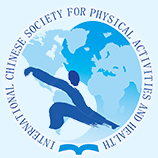Document Type
Abstract
Keywords
exercise, adults, benefits, barriers, physical activity
Publication Date
2-2024
Abstract
Purpose: Regular exercise leads to physiological and psychological benefits. University is a key venue to promote physical activity behavior in young adults. However, it is reported nearly 50% Chinese college students are not reaping the benefits due to insufficient amount of exercise. Therefore, it is necessary to investigate what challenges prevent college students from exercising. Thus, this study was to assess perceived exercise benefits and barriers in Chinese college students and compare the differences between students do exercise and who do not. Methods: The Exercise Benefits/Barriers Scale (EBBS) was used to examine perceived benefits and barriers in 118 non-exercising and 118 exercising students (84 males,152 females; aged 19±1.89) from central China. A non-exerciser does accumulate 150~300 minutes of moderate exercise or 75~150 minutes vigorous exercise over a week. The EBBS includes five subscales assessing benefits (i.e., life enhancement, physical performance, psychological outlook, social interaction, and preventative health) and four subscales assessing barriers (i.e., exercise milieu, time expenditure, physical exertion, and family discouragement). All items are on a 4-point Likert scale, ranging from 1 (strongly disagree) to 4 (strongly agree). Independent t tests were used to compare total and subscale scores between two groups. Results: We found that the total scores for benefits in exercisers were significantly higher than non-exercisers (3.06±0.38 vs. 2.85±0.41, p < 0.001), as well as psychological outlook subscale scores, preventive health subscale scores, social interaction subscale scores, and life enhancement subscale score (p < 0.05). However, there was no significant difference in physical performance subscale score. When comes to the barriers, there were also significantly difference in all barrier subscales (the total barriers scores were 1.89±0.37 and 2.14±0.40, p < 0.001), except for the family discouragement subscale. Conclusions: The results showed that non-exercising college students felt less benefits and strong barriers compared to exercising students. This may be the reason why they did not engage in regular exercise. Although the scores of perceived benefits were higher than the barriers in non-exercisers, it might not be sufficient to motivate them to be physically active.
DOI
https://doi.org/10.18122/ijpah.3.1.38.boisestate
Recommended Citation
Pang, Yanli; Xia, Cunnian; and Xia, Yue
(2024)
"A140: Comparing Perceived Exercise Benefits Between Exercising and Non-Exercising College Students,"
International Journal of Physical Activity and Health: Vol. 3:
Iss.
1, Article 38.
DOI: https://doi.org/10.18122/ijpah.3.1.38.boisestate
Available at:
https://scholarworks.boisestate.edu/ijpah/vol3/iss1/38
Included in
Exercise Science Commons, Health and Physical Education Commons, Public Health Commons, Sports Studies Commons


